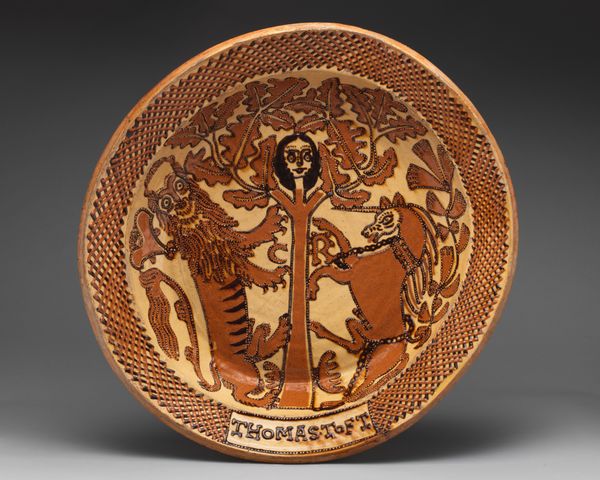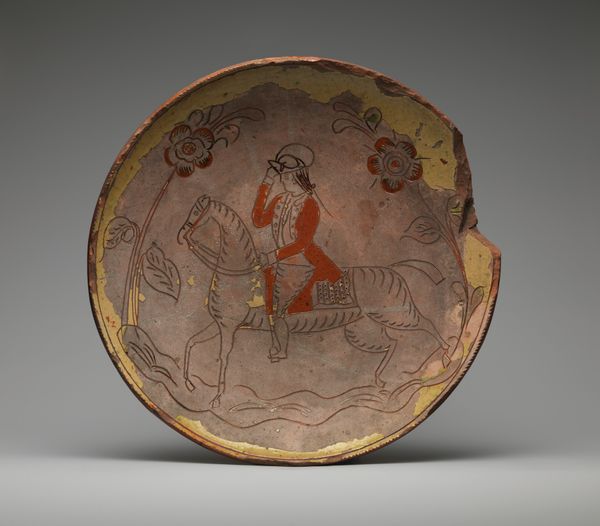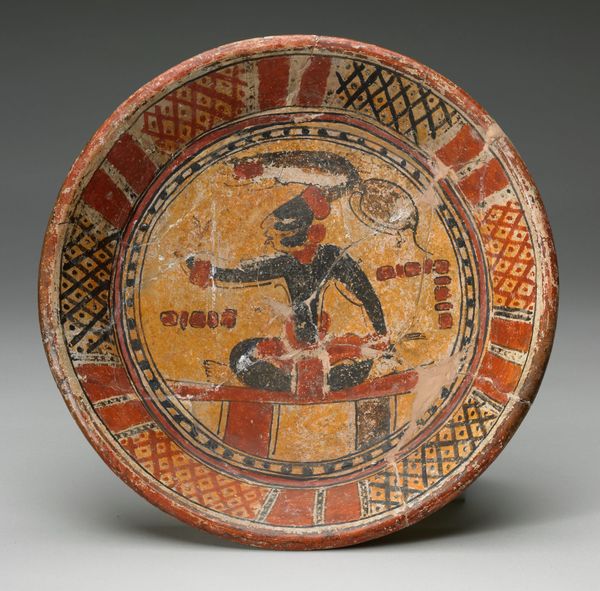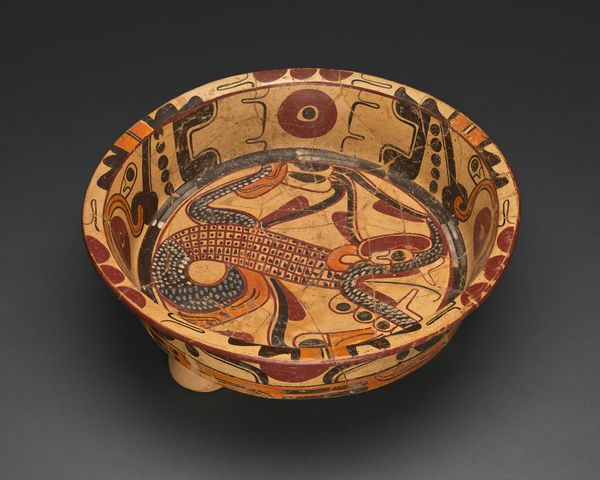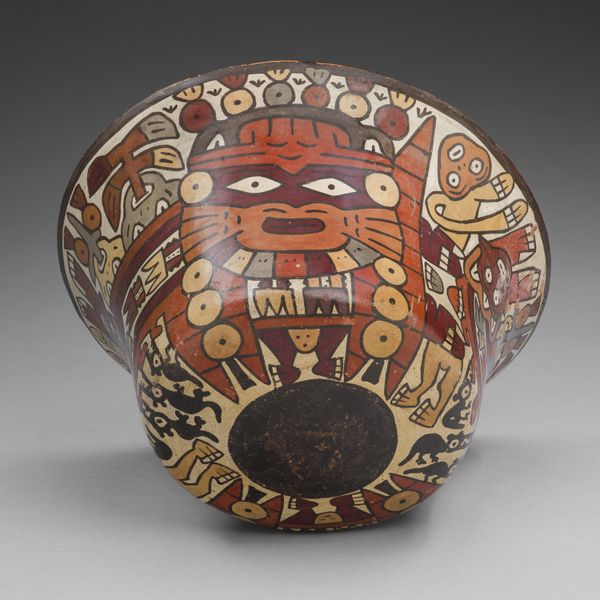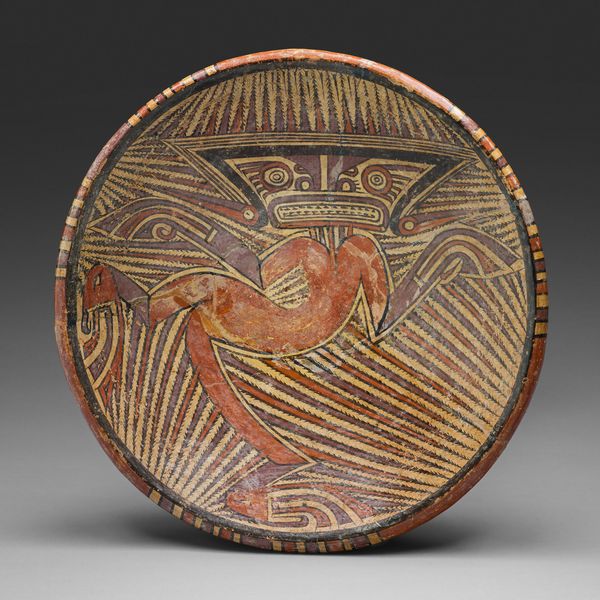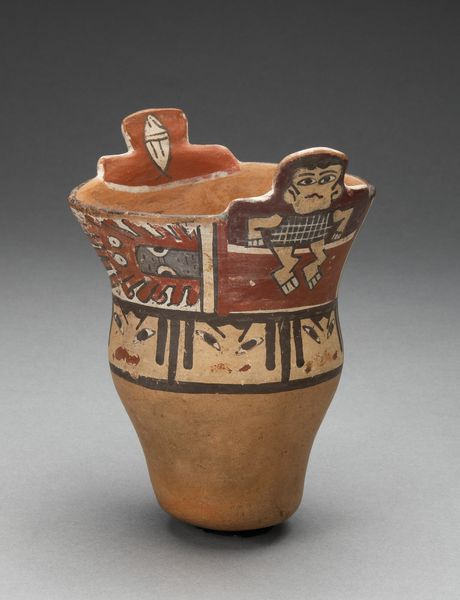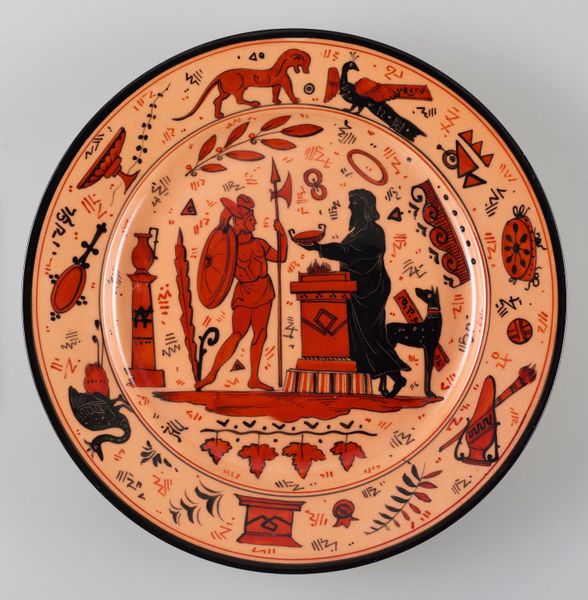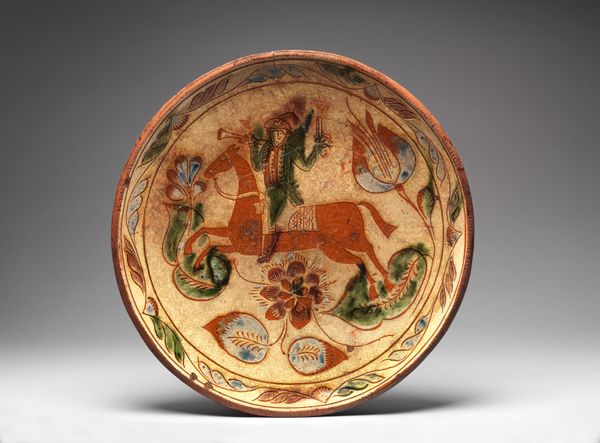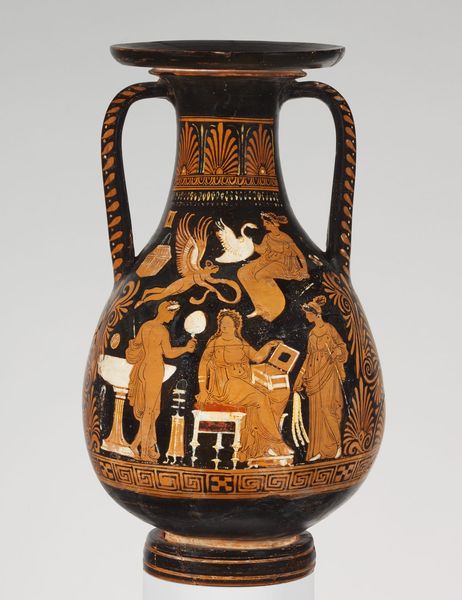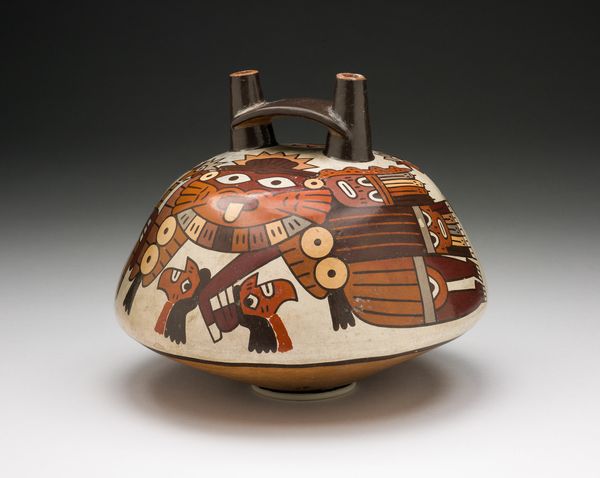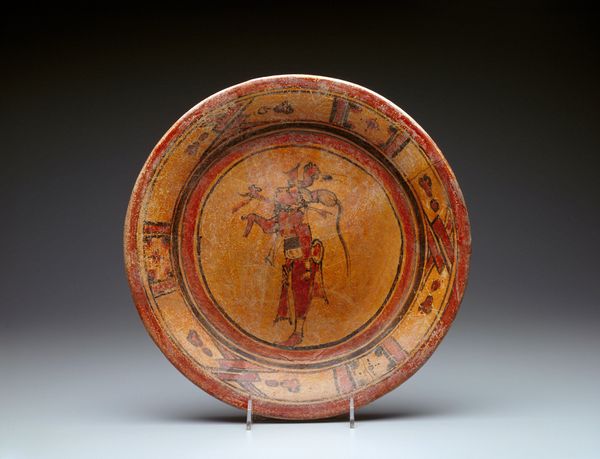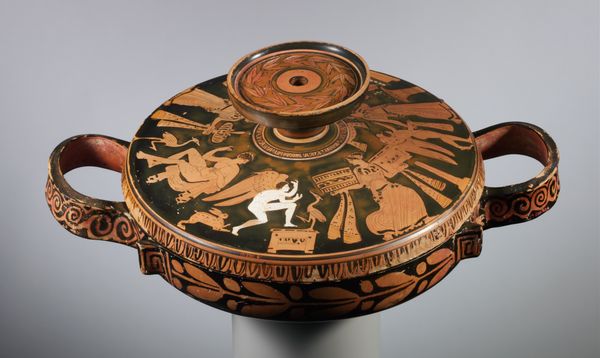
Display dish with a cavalier and portrait medallions 1677
0:00
0:00
ceramic, sculpture
#
portrait
#
medieval
#
ceramic
#
sculpture
#
ceramic
#
men
#
decorative-art
Dimensions: Overall (confirmed): 2 1/2 × 17 1/4 × 17 in. (6.4 × 43.8 × 43.2 cm)
Copyright: Public Domain
Editor: This is a ceramic display dish created in 1677 by Ralph Toft. It's currently held in the Metropolitan Museum of Art. The first thing I noticed is how flat the figures are; it almost has a storybook quality to it. What strikes you when you look at this piece? Curator: Indeed. The flatness is key. Let us examine the composition. Note the symmetry: a central figure flanked by portrait medallions. Observe the use of color; the limited palette of ochre, brown and cream creates a sense of visual unity and focuses attention on the interplay of geometric forms and textures. Consider the outer rim with the basket-weave, a tight, consistent texture that emphasizes the smoother interior surfaces. Editor: I see what you mean about the symmetry now, with the figures and the…are those floral designs underneath? Are those structurally significant? Curator: Yes. Note the stylized flora. They offer visual balance, anchoring the composition. But consider their shape and placement: how do they relate to the cavalier figure above? What meanings might emerge from this arrangement of forms? Editor: Well, the figure’s arms are raised, mimicking the curve of the medallions. I suppose the flowers might continue that sense of movement downward… almost a full circle of design. Curator: Precisely. This echoes the circular shape of the dish. Further consideration might reveal how the dish becomes not only a depiction but also embodies an inherent geometric order. This tight construction creates visual appeal. Editor: This focus on form is so helpful! I usually think about context, but seeing this dish solely as a collection of shapes and textures really highlights the skill in its construction. Curator: And with the application of these considerations we can find meaning through this focused lens of analysis. This form enables understanding, wouldn't you agree?
Comments
No comments
Be the first to comment and join the conversation on the ultimate creative platform.
